Guest post from Adina Timar, Head of Content at Userpilot, who’s an expert in SaaS marketing and optimizing the user journey for product-led growth.
Increasing product adoption is vital for SaaS companies. Most companies set OKRs based on this objective, and the imperative to increase adoption is usually hard-baked into product roadmaps.
For any given product, the requirements of increasing adoption vary in relation to many different factors.
That makes it essential to approach the adoption objective with a flexible framework that adapts to your changing audience and product maturity – and to select the most suitable adoption metrics for your specific needs.
In this blog, we will explain how to do that, and then outline five of the most effective product adoption strategies that the fastest-growing SaaS companies are using in 2023.
What is Product Adoption?
Product adoption occurs when a user commits to using your product as their preferred solution to the problems and needs that led them to try it in the first place.
Functionally, product adoption is the opposite of churn.
New user acquisition sits before the two. A brand new user is convinced enough to give your product a go but has not seen enough benefit to stop looking for alternatives.
In product-led growth environments, driving product adoption takes place primarily in-app and can be driven by in-app guidance (we’ll cover this in a bit).
Why Does Product Adoption Matter?
The longer somebody remains a paying customer of a SaaS business, the more money in subscription fees that business makes. Customer retention is therefore of paramount importance in SaaS.
Product adoption is a leading indicator of retention. A customer who has adopted your product is achieving sustained value from it, and is therefore far less likely to churn than one who has not.
This matters enormously because:
- Winning new customers is typically between 5 and 25 times more costly than keeping current ones
- Research shows that increasing customer retention by 5% increases profits by between 25% and 95%
- Adopted users are ideal targets for increasing revenue through upselling
5 Segments of the Product Adoption Curve
Most products go through a product adoption curve, where the characteristics of their audience change as the product and its market mature.
This curve – also known as the “innovation adoption lifecycle” – consists of five segments:
- Innovators (2.5%): the first group to adopt new solutions is small and excited about innovation for its own sake
- Early Adopters (13.5%): this group comes next as your product begins to establish a good reputation
- Early Majority (34%): the next segment is risk averse and will only come on board when your product has proven itself, through the reassurance offered by the earlier groups
- Late Majority (34%): an even more risk averse segment, which displays more caution and less tolerance of glitches
- Laggards (16%): the final group will only adopt a new solution when there is no other alternative available
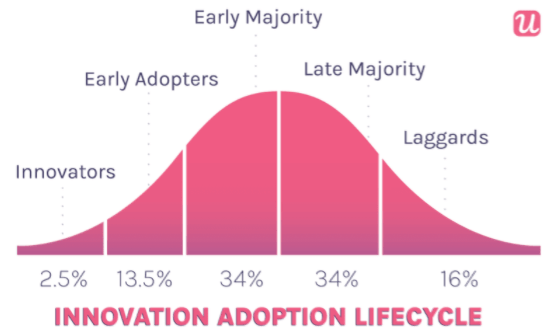
What this means is that as your product matures, the most effective strategies for driving product adoption change.
For example, Innovators and Early Adopters are likely to respond well to requests for feedback and ideas due to their interest in and enthusiasm for new solutions. The other groups will appreciate comprehensive step-by-step onboarding to ensure they get value fast.
6 Stages of the Product Adoption Process
For each of these segments, product adoption is not something that happens at once. Users follow a journey from not being aware of your product at all to complete adoption, which comprises distinct stages.
Your product adoption process should aim at making it as easy as possible for users to pass through each of these six stages:
- Product awareness: potential users become aware of your product as a potential solution to their problem
- Product interest: prospective users are starting to seek information about your product for themselves. Your objective should be to make the right information easily available to different audience segments based on their use cases
- Product evaluation: prospects are weighing up the pros and cons of giving your product a try compared to other solutions. You need to communicate its strengths, its USPs, how it compares to alternatives, and minimize the perceived costs of testing it out
- Product trial: crossing the threshold into this stage is typically the point of new user acquisition. A user has decided to try your product out. The best way to drive these users towards adoption is with effective onboarding
- Product activation: the user reaches a point where they experience the value of your product – that is, they “activate”
- Product adoption: finally, activated users need to be convinced that your product is a long-term solution for them, by delivering regular and increasing levels of value
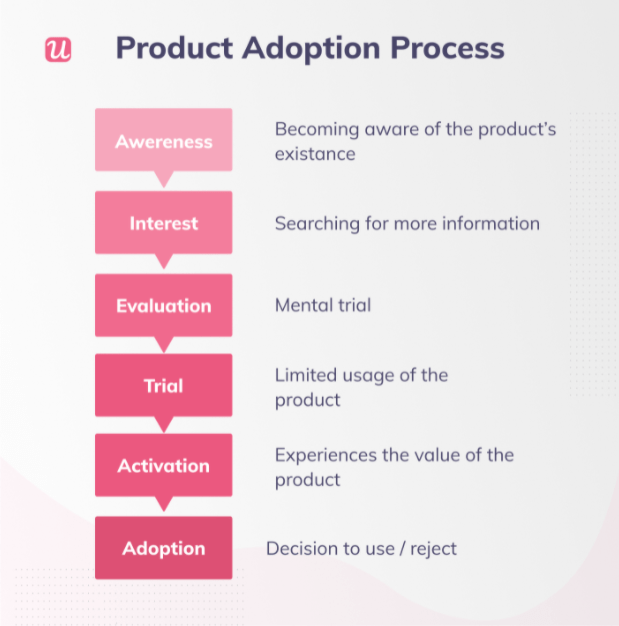
At any given time, you will have users going through each of these stages, so it’s important for your product adoption strategy to have ongoing measures in place that provide the right support, to the right users, at the right time.
Product Adoption Metrics – How to Measure Success
An essential part of increasing product adoption is effective measurement.
Whatever a user has to do to pass through the six stages of your product’s adoption process, the following metrics will all be valuable in helping you to evaluate the best ways to promote adoption.
Feature Adoption Rate
Using multiple features of your product is a good proxy for a user getting value from it. If your efforts are causing a rising percentage of users to try more features, it is a strong signal that your product adoption strategy is working.
Time To First Value (TTFV)
The quicker users feel the benefit of your product (ie activate), the fewer you will churn through frustration or disengagement.
Customer Lifetime Value (CLV)
If the average revenue you generate per user is rising, users are sticking around longer – suggesting that more have adopted the product.
Customer Engagement Score
By ascribing a value to each of the major actions users have to take to move towards adoption, you can produce a weighted index showing how close your user base, or segments of it, are getting.
You should set targets to improve performance against each of these metrics, and then – using in-app messaging, as we’ll discuss at length in the next section – engage with users on an ongoing basis to encourage and help them to take the necessary actions.
5 Top Strategies to Increase Product Adoption
The best ways to influence your audience will depend on your product and who your users are. However, these five strategies have almost universal applications across SaaS.
None of them are new for 2023, but they are incredibly important and if you successfully execute them individually or jointly, the impact on your product adoption will be significant.
1. Reduce Signup Flow Friction
Even in 2023, many SaaS businesses still make the process of creating an account unnecessarily arduous for new users. A prospect who is put off by the amount of information requested or bugs in the workflow will not reach the trial stage, let alone adoption.
If you can make the signup experience light and undemanding – fun even – new users will get a good first impression, and be more likely to come back and keep trying your product.
Successfully completing signup should be a heavily-weighted event in your customer engagement score schema.
Reduce friction by:
- Only asking for the bare minimum information to get a user started at the outset. You can always collect more later on once they are more invested.
- Consider allowing new users to sign up using Google, Facebook, or other pre-existing profiles.
- Add value during the onboarding process by sharing useful information, both in-app and in onboarding emails.
Here’s a great example from Loom, making it easier for the user to take the first step with only their email address and offering multiple options to login with existing Gmail. Slack, Apple or SSO.
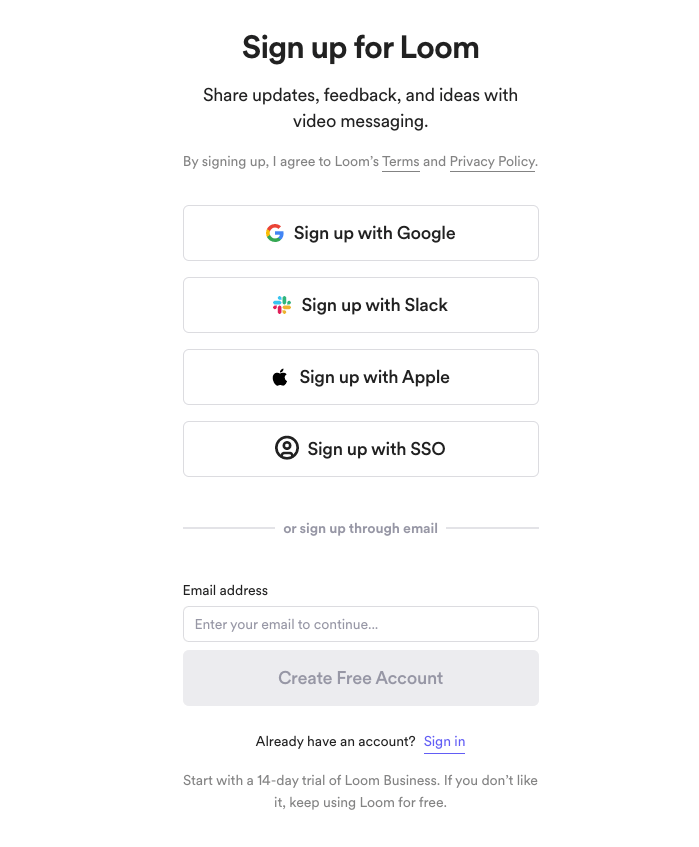
2. Personalize Onboarding
If you know what a user is looking to get out of your product by the time they’ve created their account, you can improve time to value (TTFV) and reduce the chances of a user becoming disengaged by providing onboarding experiences that are relevant only to their preferred use cases.
One of the simplest and most effective ways to do this is with a welcome screen micro survey – either during or immediately after signup.
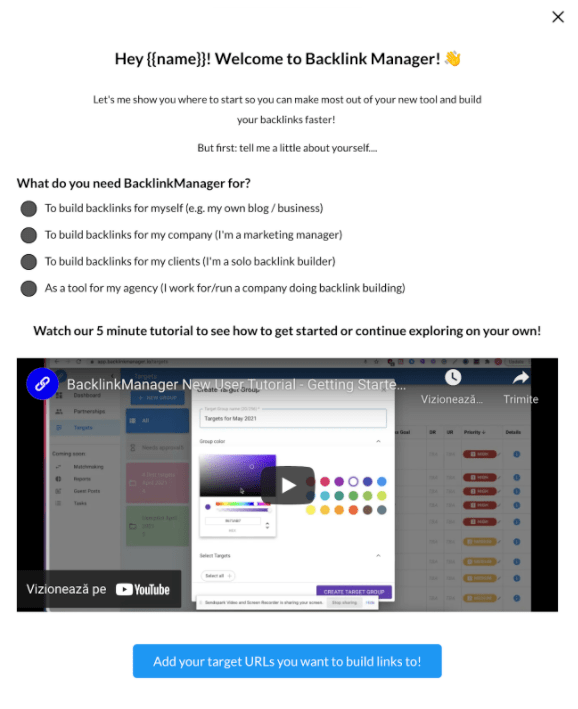
By asking what a user’s job role is, what they intend to use the product for, why they signed up, or other questions, it is possible to assign them from the very beginning to a relevant persona and/or use case.
Building separate user segments based on different needs will allow you to introduce each to the features and functionality that will be most valuable to them.
In order to keep signup friction to a minimum, it’s best to limit the number of questions you ask at this point.
However, you can keep collecting information about users throughout their lifecycle – using NPS satisfaction micro surveys on completion of tasks, for example – to build up a more complete picture and continually refine onboarding and in-app messaging to be as relevant as possible.
3. Use In-App Messaging and Onboarding Experiences to Guide Users to Activation and Drive Feature Adoption
In 2023, the vast majority of SaaS products don’t just leave new users to their own devices after signup. They provide in-app onboarding to show users how to get the best out of them – and to reduce TTFV and improve feature adoption.
There are many different approaches you can take to help users activate:
When activation involves following a limited number of simple steps, a checklist showing what has been done and what remains to be done can help users understand and motivate them to complete the tasks at the same time.
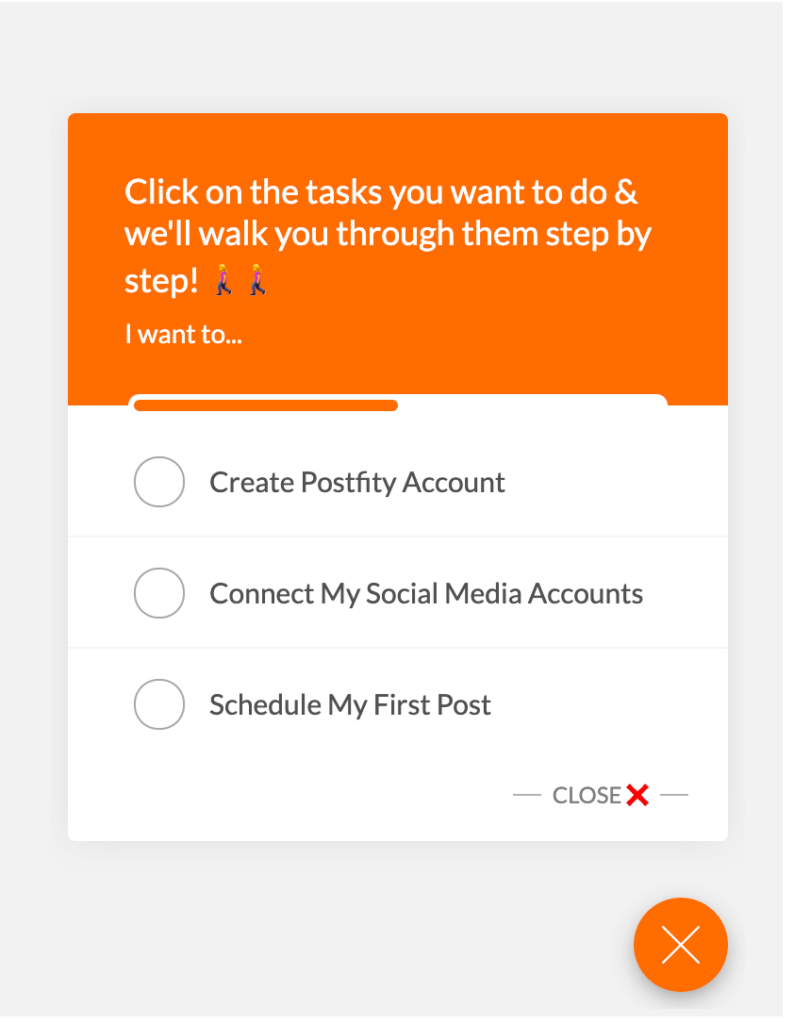
For more complex workflows, an interactive walkthrough such as a series of tooltip prompts which invite a user to perform one action and then shows them how to perform the next – may be more suitable.
Interactive walkthroughs have the added benefit of combining learning how to complete a task with actually doing it.
To promote feature adoption, use in-app messaging to draw users’ attention to functionality they haven’t tried before.
- Announce new features to the right user segments that would benefit most from using them
- Use secondary onboarding checklists to guide users to discover relevant features once they reached the activation point
- Use tooltips and hotspots to make the in-app experience as seamless as possible
The list can go on, what’s important to remember is to always be contextual when communicating with your users. Instead of ”spamming” all your user base with modals, checklists and tooltips, use segmentation and show the right message to the right user, when it makes sense for them to see it.
4. Collect and Act on User Feedback
Users themselves provide an extremely valuable source of information about how to improve product adoption. If you can get them to tell you what they do and don’t like about your product, you can change it so that future users get a better experience.
A great way to collect actionable feedback is through micro surveys, delivered contextually, in-app, instead of long-form surveys delivered using email.
Micro surveys are minimally intrusive and distracting, and when triggered by user actions, they can be asked at exactly the time when users are thinking about the topic you’re asking about.
Both these factors increase the quality and quantity of answers you can expect.
Take Slack for example, regularly collecting feedback from their users on their experience.
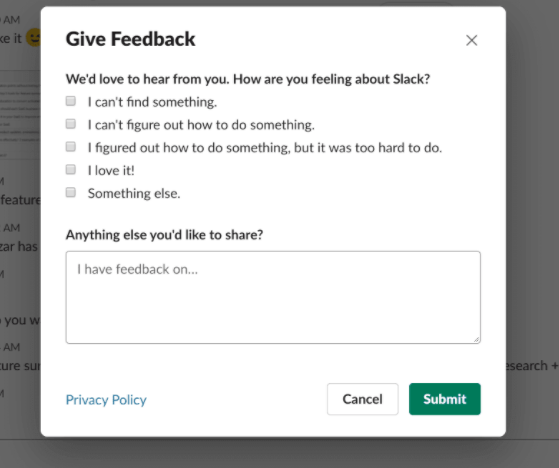
Not only can the data you collect be used to improve things for future users, but it can also help decrease churn since you can proactively fix issues.
By asking your users what they need and how they feel about what you provide – and then showing them that you’re listening by following through on what they’re asking for – you show that you value them, building a better relationship between the business and its customers.
5. A/B Test Different Solutions to Find the Best
Improving product adoption is an iterative process of gradual optimization. That is, it’s something you need to work on continually and that relies on experimentation.
It is only by testing one potential solution to a problem against another (usually, a new solution versus the previous one) that progress of this sort can be made.
So, split users into two groups: one gets the pre-existing workflow, the other the new one. If the latter gets consistently better results then it should be rolled out for all users.
Start with a goal (objective) of what you want to achieve, let’s say product activation since this leads to adoption. Then decide on an experiment you want to run. For example, testing to see if a checklist of tasks can help increase the activation rate.
Some product adoption platforms would allow you to do A/B testing directly when setting up the in-app flow experiences (checklists, modals, or other UI patterns).

You can also A/B test different UI elements (dashboard layouts, navigation options, messaging) to track how best to support users. There is no limit to how micro you can get with testing!
For product managers, no code A/B testing solutions are preferable – as these allow them to set up and run experiments themselves, without wasting developer time.
That wraps up our run-down of the most effective ways to increase product adoption in 2023. If you have any more, we’d love to hear from you!




